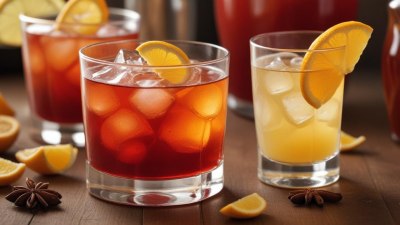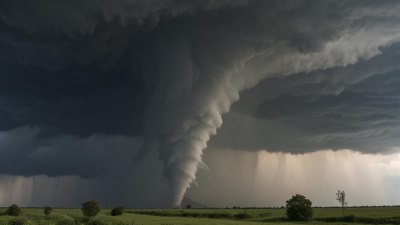Why Certain Drinks Only Taste Right in the Right Season
Discover why some drinks align perfectly with seasonal changes, enhancing enjoyment and flavors.

This image was created with the assistance of Freepik
Seasonal changes significantly influence our taste preferences, and certain drinks are uniquely associated with specific times of the year. From the comforting warmth of cocoa in winter to the refreshing crispness of lemonade in summer, our cravings tend to align with the environment and mood dictated by the seasons. Understanding why certain drinks taste right in their corresponding seasons involves diving into cultural, psychological, and biological factors.
The Impact of Temperature
One of the most vital factors influencing our drink preferences is temperature. During hotter months, our bodies seek hydration and relief from heat, favoring cool and refreshing beverages. Cold drinks such as iced teas, smoothies, and fruity cocktails become staples, while in colder months, warm drinks like tea, coffee, and spiced ciders reign supreme. Our bodies naturally crave warmth and comfort in winter, further solidifying the association of specific drinks with specific seasons.
Cultural and Historical Context
Cultural traditions and historical practices also play significant roles in the seasonal popularity of certain beverages. For example, eggnog is synonymous with the winter holidays, evoking feelings of celebration and nostalgia. Similarly, pumpkin spice lattes have become a fall favorite, tapping into both the flavor profile of the season and cultural marketing practices by various brands. These drinks resonate with collective seasonal experiences, enhancing their appeal when consumed at the appropriate time of year.
Flavor Profiles and Ingredients
Seasonal ingredients further dictate which drinks are enjoyed during specific times of the year. Fresh fruits like strawberries, watermelon, and citrus are abundant in the summer, leading to refreshing cocktails and sodas. Conversely, spiced flavors such as cinnamon, nutmeg, and pumpkin pie spices become more prevalent in colder months, as they convey warmth and comfort. The natural availability of fresh ingredients aligns perfectly with seasonal celebrations and sentiments, pushing certain drinks to the forefront of our preferences.
Psychological Factors
Psychologically, seasons induce different moods and feelings, influencing our cravings. Winter often brings a sense of coziness, and drinks that evoke warmth, such as hot chocolate or mulled wine, become preferable. In contrast, summer tends to elicit feelings of vibrancy and energy, making refreshing, cooler beverages more desirable. These seasonal associations are reinforced through experiences and memories, creating a compelling urge to consume specific drinks at certain times of the year.
Crafting Seasonal Cocktails
Mixologists and bartenders understand the key to a successful seasonal drink lies in the ingredients used. For instance, a summer cocktail might include mint or basil, offering a refreshing herbal note, while winter drinks may use darker spirits and richer flavors. Seasonal cocktails celebrate the essence of the moment, often reflecting the availability of ingredients. These drinks are designed not only to be flavorful but also to enhance the overall seasonal experience.
The Role of Marketing
In addition to natural cravings and cultural traditions, marketing plays a substantial role in dictating which seasonal drinks gain popularity. Many beverage companies launch limited-edition flavors or designs that align with specific holidays or seasons, creating a buzz around these offerings. The narrative behind these products emphasizes seasonal enjoyment, making consumers more likely to indulge in drinks that they wouldn't typically gravitate towards outside of those time frames.
Health Considerations
Health benefits tied to specific seasonal drinks further influence their popularity. For example, refreshing beverages rich in hydration and vitamins are considered ideal during summer, while comforting, warm drinks can provide relief during cold weather. Herbal teas and hot drinks imbued with health-boosting ingredients like ginger and turmeric are sought after during winter months to support immunity and warmth. Hence, the seasonal context solidifies our preferences based on health and wellbeing.
Regional Influences
Lastly, regional climate variations shape seasonal drink preferences. For instance, tropical regions may have different seasonal drinks than temperate climates, with influences determined by available ingredients and cultural practices. In coastal areas, fruity, refreshing drinks might be prevalent year-round, while mountainous or colder regions may focus on hot beverages during the winter. Understanding regional influences broadens our perspective of how and why drink preferences shift with the seasons.
The Experience of Seasonal Drinking
Enjoying seasonal drinks is often accompanied by festive and social experiences, further deepening the association. Seasonal gatherings, celebrations, and holidays are accompanied by specific drinks that enhance the atmosphere. Whether it's sipping mulled wine by the fireplace during winter gatherings or enjoying a refreshing mojito at a summer barbecue, these moments are cherished and distinctly tied to the types of drinks served, creating lasting memories linked to seasonal associates.
Ultimately, the preference for specific beverages during certain seasons is a complex interplay of temperature, cultural significance, psychological associations, and regional factors. The seasonal changes spark a unique craving for flavors that align with our environment, elevation of mood, and social situations. Whether it’s a pumpkin spice latte in autumn or a refreshing sangria in summer, these beverages serve as delightful reminders of the unique experiences each season brings.











